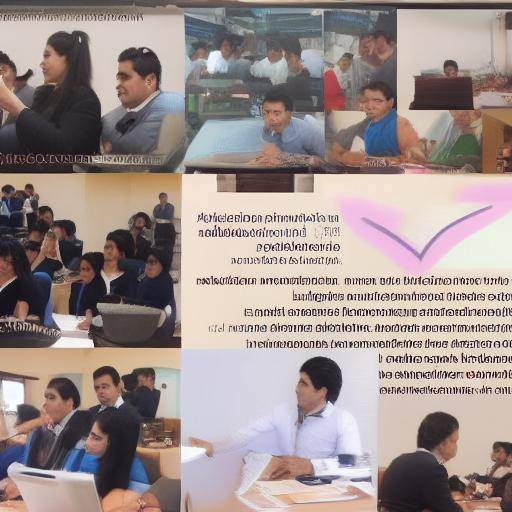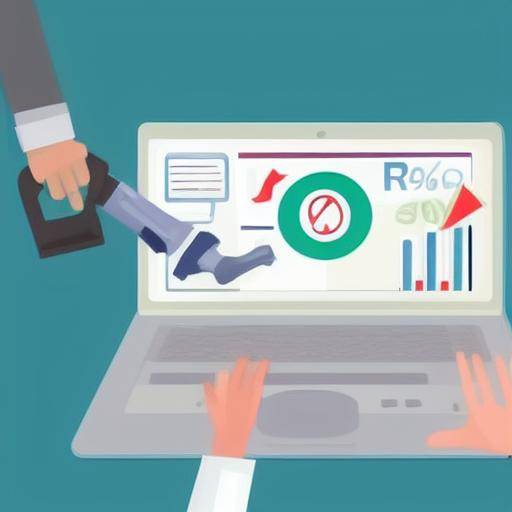
Continuous training, despite its importance, is often a neglectful aspect of professional development. The rapid evolution of industries and constant technological innovation require professionals to be constantly updated, both in their technical skills and in their soft skills. In this article, we will thoroughly explore the importance of continuing training in the current context, its linkage to personal finance and its impact on employment. We will also provide valuable practical advice, comparative analysis and predictions on future trends.
Introduction
The current working environment is highly competitive and dynamic, which demands that professionals be in constant pursuit of expanding their knowledge and skills. Continuing training, also known as continuing education or professional development, refers to the process of acquiring new skills, knowledge and training throughout working life. This training goes beyond initial formal education, and its importance is to remain relevant and competitive in a constantly changing labour market.
History and Background
Continuous training has its roots in the Industrial Revolution, where the demand for specific technical skills led to the emergence of training programs for workers. Over time, the nature of work has evolved significantly, which has led to the need for continuous education. Since its inception, continuous training has experienced a series of transformations, adapting to the changing needs of employers and employees.
Deep analysis
Continuous training not only benefits individuals, but also has a positive impact on organizations and the economy in general. According to recent studies, trained workers tend to be more productive, creative and committed. In addition, companies that encourage continuous training among their employees often experience lower rates of staff rotation and higher levels of job satisfaction.
However, continuing training is not without challenges, as it may be costly and time-consuming. Conciliation between work, training and personal finance can generate tensions for many professionals. It is therefore essential to understand how continuing training is intrinsically linked to personal finance.
Importance of Personal Finance in Continuing Training
Personal finances play a crucial role in the ability of an individual to seek continuous formation. Investment in education may require significant disbursement of money, leading to the prudent management of personal finances being critical to ensuring that continued training is sustainable in the long term. A carefully planned budget and consideration of funding alternatives such as scholarships, educational credits or reimbursement options by employers can relieve the financial burden associated with continuing training.
Relationship with Employment
Continuous training not only benefits individuals in terms of personal and professional growth, but also has a positive impact on job opportunities. Employers value candidates who demonstrate a commitment to continuous learning, as these workers are often more adaptable and better prepared to take on new challenges in a constantly changing working environment.
Comparative analysis
When comparing continuous training with personal finance and employment, it is observed that the three are intrinsically interconnected. The development of skills through continuing training can lead to increased employment opportunities, which in turn can contribute to stronger financial health. On the other hand, solid personal finances can facilitate the search for opportunities for continuous training, thus creating a virtuous cycle of personal and professional growth.
Practical Tips and Accessible Advice
- Develop a financial plan: Before committing to continuing training, it is crucial to assess the short- and long-term financial impact. A well-designed financial plan can help ensure that continuous training is affordable and sustainable.
- Explode financing options: Exploring different funding options, such as scholarships, grants, educational credits or employer reimbursement programs, can provide financial support for continuing training.
- Find flexible programs: Given the changing nature of employment and personal finance, opting for flexible continuing training programmes, such as online courses or part-time programs, can help balance education with other commitments.
- Investment return assessment: Before embarking on a continuous training program, it is useful to evaluate the return of potential investment in terms of employment opportunities and professional advancement.
Industry Reflections and Expert Reviews
The business community and professional development experts agree that continuing training is essential to maintaining competitiveness in the current labour market. Technological advances and globalization have redefined skills requirements, underlining the importance of being aware of trends and adapting continuously.
Case Studies and Real Life Applications
Case studies provide concrete examples of how continuing training has driven careers and transformed lives. From acquiring digital skills to obtaining specialized certifications, these cases illustrate how continuing training has been a catalyst for professional success.
Future Trends and Predictions
As artificial intelligence and automation transform the nature of work, continuous training is expected to acquire even greater importance. Advances in technology are creating demands for emerging skills, highlighting the need for a constant updating of knowledge and skills.
Conclusion
Continuous training is a central element in the development of solid careers and strategic personal finances. When approaching continuous training proactively and considering their relationship with personal finance and employment, professionals can position themselves for success in a dynamic working environment. Investment in continuous training not only opens doors to new professional opportunities, but also contributes to long-term personal and economic growth.
FAQ
What is the difference between continuing education and traditional education?
Continuing training focuses on acquiring new skills and knowledge throughout working life, while traditional education refers to initial formal education, such as that obtained in academic institutions.
How does continuous training affect personal finance?
Continuous training can impact personal finance by requiring investments in courses, study materials and time. However, effective continuous training can lead to greater job opportunities and career advancement, which in turn can have a positive impact on long-term personal finance.
Are there financing options available for continuous training?
Yes, there are various funding options for continuing training, including scholarships, grants, educational credits and employer reimbursement programs. Explore these options can help make continuous training more financially accessible.
What impact does continuous training have on employment opportunities?
Continuous training demonstrates to employers a commitment to learning and continuous improvement, which can help to obtain new job opportunities and promotions within an organization.
What are some demand skills that can be acquired through continuous training?
Skills such as programming, data analysis, digital marketing, project management and leadership are examples of demand skills that professionals can acquire through continuing training to improve their job prospects.
How can we find the balance between continuing training, personal finance and labor responsibilities?
Finding a balance between continuous training, personal finances and job responsibilities requires careful planning and the identification of flexible training options that meet individual needs and schedules. Prioritizing and establishing realistic goals can also be key to finding that balance.
In short, continuous training, personal finances and employment are intrinsically interconnected, and understanding their relationship can be fundamental to long-term growth and professional success. By addressing these areas in an integral way, individuals can position themselves to thrive in a constantly changing working environment and evolve along with market demands.
Concluding, continuing training not only allows professional development and the expansion of skills, but also contributes to personal financial well-being. By considering how continuing training impacts on personal finance and employment, individuals can make more informed decisions about their professional development, economic future and job stability.
References:
- Permanent Education and Continuous Training
- Trends in Continuing Training
- The relationship between Continuous Training and Personal Finance
It recalls that continuous training is a motor for personal, professional and economic development. Staying up to date and adapting to the demands of the labour market is essential to progress in the career and ensure a prosperous financial future. Do not underestimate the transforming power of continuous formation!
Go ahead and continue your path to growth and professional success!
Until next time!






















































